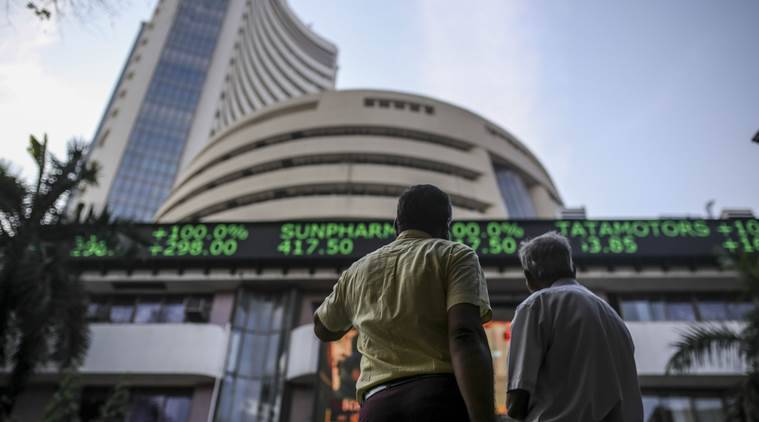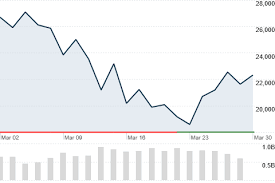The stock market is a marketplace where shares of publicly traded companies can be bought and sold. Through the sale of shares, companies can generate capital from the public. Investors have the potential to earn a profit by purchasing shares in companies that experience growth in value over time. However, the stock market is known to be volatile and subject to fluctuations influenced by factors such as economic conditions and investor sentiment. To take advantage of these fluctuations, investors employ a range of strategies, from long-term buy-and-hold approaches to short-term trading and speculation.
Introduction to the Stock Market
The stock market, which is also known as the equity market, functions as a platform for trading shares or ownership stakes in publicly traded companies. The value of these shares can fluctuate based on a range of factors, such as company performance, economic conditions, and investor sentiment.
An integral part of the global financial system, the stock market enables companies to raise capital by offering shares to the public. This capital can be used for various business activities, including research and development and new projects.
There are two primary types of stock markets: the primary market, where new shares are issued to investors for the first time through an initial public offering (IPO), and the secondary market, where investors can purchase and sell shares on an ongoing basis.
Due to the complexities and dynamics of the stock market, numerous factors influence the prices of individual stocks and the overall market. Investors employ various strategies to capitalise on these fluctuations, including long-term buy-and-hold approaches and short-term trading and speculation.
Primary and Secondary Markets
There are two main types of markets in the stock market: primary and secondary markets. The primary market is where new securities, like stocks and bonds, are offered to investors for the first time, often through an initial public offering (IPO), which allows private companies to become publicly traded. Meanwhile, the secondary market is where previously issued securities, like stocks and bonds, are bought and sold among investors. The stock exchange, such as the NYSE or Nasdaq, is the most well-known example of the secondary market, where prices of securities are determined by supply and demand.
How the Stock Market Works?
The stock market provides a platform for publicly traded companies to sell shares to the public, and for investors to buy and sell these shares based on various factors such as company performance, economic conditions, and investor sentiment. The primary and secondary markets are the two main types of markets in the stock market, with the secondary market being characterised by the buying and selling of previously issued securities. In this market, the price of a share is determined by supply and demand, and investors use different strategies to predict which stocks will perform well. Due to its volatility, investors may choose to diversify their portfolio and use different strategies to profit from market fluctuations.
Fundamental Analysis of Stocks
When analysing stocks through fundamental analysis, an investor examines the financial and economic factors of a company, such as revenue, earnings, assets, liabilities, and management, to determine its intrinsic value and whether it is undervalued or overvalued in the market. In addition to company-specific factors, fundamental analysts also consider broader economic factors, such as interest rates and market trends, that may affect the company’s financial performance. This approach is commonly used by long-term investors who seek to invest in stocks with strong fundamentals and hold them for an extended period, rather than relying on short-term market trends.
Factors Affecting the Stock Market
The stock market can be influenced by various factors, including economic, political, and social factors. Economic factors, such as inflation, interest rates, and economic growth, have a significant impact on the stock market. Similarly, government policies and regulations, social factors like consumer sentiment and demographic trends, and natural disasters or geopolitical events can cause market volatility. As a result, investors should stay informed about these different factors and how they may impact the stock market’s performance and the individual stocks they hold.
Investment Strategies in the Stock Market
Investors have a variety of investment strategies available in the stock market to meet their financial objectives. Value investing entails buying undervalued stocks with potential to increase in value. On the other hand, growth investing concentrates on acquiring stocks of companies that have a high potential for earnings growth. A combination of these two strategies can also be used, known as a blend approach. Additionally, some investors prefer a buy-and-hold strategy that involves retaining stocks for an extended period of time, while others prefer more active trading approaches such as day trading or swing trading. The critical aspect of successful investing is to create a strategy that aligns with the investor’s financial goals, risk tolerance, and investment experience.
Global Stock Markets and Trading
Global stock markets enable investors to purchase and sell securities from all over the world. The most prominent stock markets include the New York Stock Exchange (NYSE) in the United States, the Tokyo Stock Exchange in Japan, and the London Stock Exchange in the United Kingdom. Investors can engage in stock trading through various avenues, including online brokerages, conventional brokerage firms, and financial institutions. With the advent of electronic trading, it has become more convenient for investors to take part in global stock markets, leading to the emergence of high-frequency trading. Nonetheless, trading on global stock markets entails risks, such as fluctuations in currency exchange rates and geopolitical events that can impact market performance. It is crucial for investors to recognize these risks and diversify their portfolios accordingly.
Stock Market History and Evolution
The origins of the stock market can be traced back centuries, with the earliest known stock exchange established in Antwerp, Belgium in the 16th century. This was followed by the Amsterdam Stock Exchange in the early 17th century. In the United States, the New York Stock Exchange (NYSE) was founded in 1792, becoming the world’s largest stock exchange. Over time, the stock market has undergone various changes and technological advancements, such as the introduction of electronic trading and the rise of high-frequency trading. These changes reflect the evolving nature of the global economy and the growing significance of financial markets in modern society.
Read more: How to invest in stocks?
Future Trends in the Stock Market
Various trends are expected to shape the future of the stock market, such as the increasing significance of technology and the growing emphasis on social responsibility and sustainability. Technological progress in artificial intelligence and machine learning is likely to transform the stock analysis and trading processes. Meanwhile, the growing trend of sustainable investing may trigger a shift in the preferences of investors towards companies that are environmentally and socially responsible. Furthermore, the state of the global economy and political environment will continue to exert an impact on the stock market, necessitating investors to stay up-to-date and flexible in order to navigate the changes.
Famous Stock Market Crashes and Their Impact.
The global economy has been significantly impacted by several famous stock market crashes that have caused widespread financial turmoil. Black Tuesday, which occurred in 1929, is one of the most well-known crashes and marked the beginning of the Great Depression. The crash resulted from over-speculation, economic uncertainty, and a lack of government regulation.
In 1987, another significant crash, Black Monday, saw the Dow Jones Industrial Average plummet by 22.6% in a single day. This crash was due to various factors, including computerised trading and high levels of debt.
The 2008 financial crisis is another example of a significant market crash. The crisis was caused by the collapse of the housing market and the failure of major banks and financial institutions. This led to a global recession and widespread job losses, foreclosures, and economic hardship.
These market crashes have emphasised the importance of government regulation, risk management, and the need for investors to diversify their portfolios. They serve as a reminder of the volatility of the stock market and the potential impact of financial instability on the global economy.



